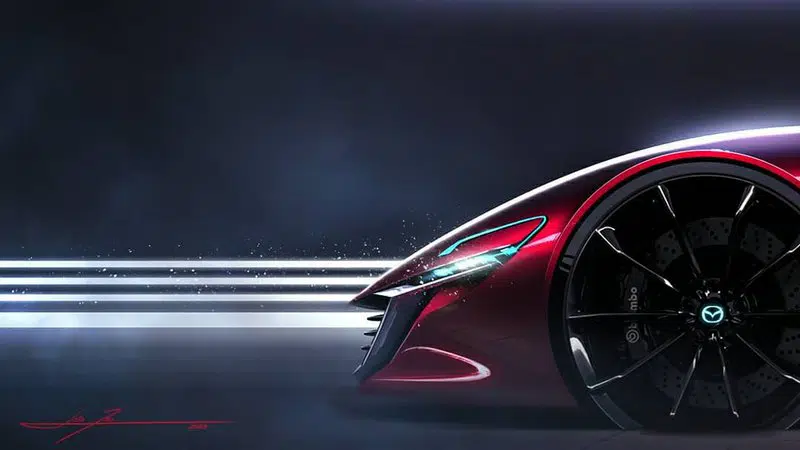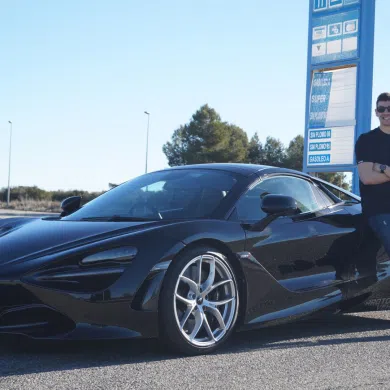It was 2020 when here, in Topspeed.gr we wrote that "the rotor returns in 2022". The years have changed, the times have changed, those who mocked us back then have disappeared and we were out by... only a few days. On January 13, 2023, Mazda will solemnly announce the return of the rotary engine. But, is that the whole story?
Yes, we knew - and we wrote it since then- that the Mazda would place the wankel motor as a range extender in its first electric model, the MX-30, as it does. The Japanese have confirmed the "whispers" for so many years that a team of about 100 people were working in the so-called "back rooms" of Hiroshima on the development of the rotary engine and to the more recent ones that "they have found something". Something that reduces pollutants? Reduces fuel consumption? Increases the life of the apex seals? That's something we'll see in the future.
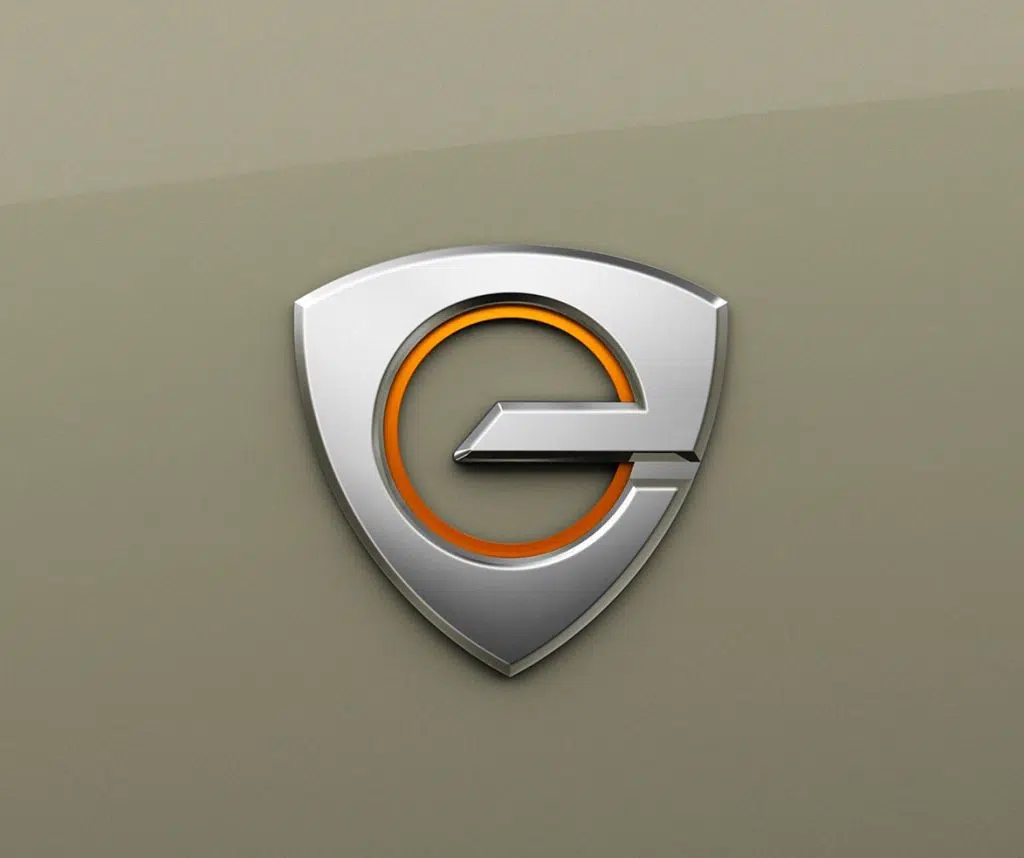
The point, however, is elsewhere. That the Japanese automaker, while long denying that there is any development on the rotary engine, has been filing patents, registering the "RX-7" and "RX-9" trademarks and making other moves that leave a hope that in 2024, it may introduce the Mazda RX-9. Let's look at all the details.
The collaboration with Toyota and the new model
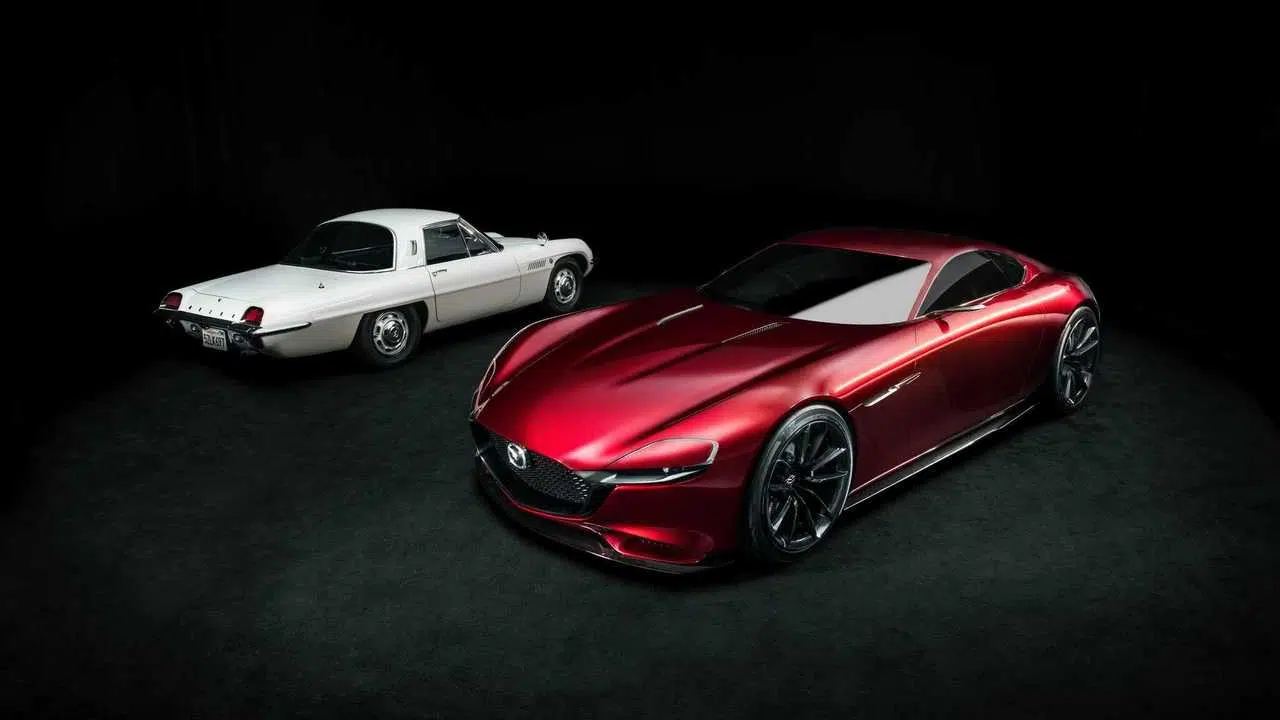
In the beginning was the... context. As long as the rumours about Mazda's new sporty flagship were circulating - keep in mind that at the moment this is the only model missing from the brand's updated range - we couldn't help but wonder on which chassis a new RX-7 or RX-9 would "step on". The answer has now been given.
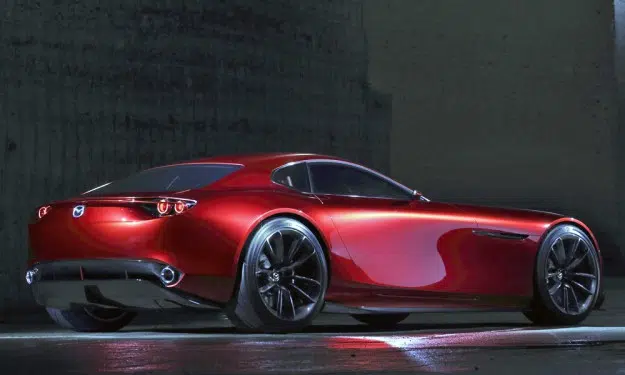
Toyota recently revealed the Toyota GR GT3 Concept, which looks... devilishly similar to the Mazda RX-Vision GT3 Concept. Now, reports have the Japanese automotive giant working on a production model of the concept. Given that Toyota has bought a 5% stake in Mazda and that the two companies work closely together, reports of them collaborating on a joint halo coupe project don't seem so far-fetched anymore.
The engine
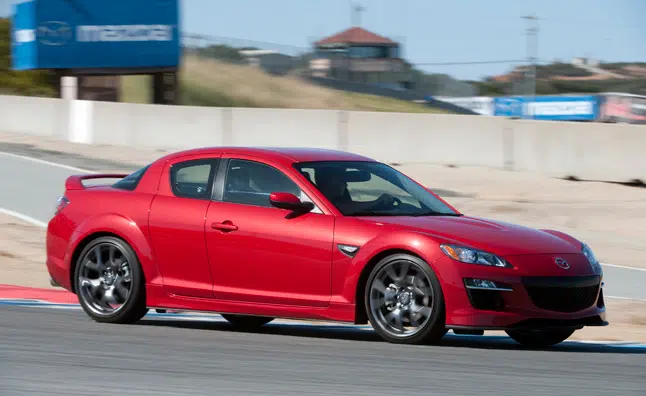
Recently (again) the Japanese Best Car magazine revealed that Toyota is preparing the GR GT with an engine provided by Gazoo Racing, together with Mazda. The engine output of the GR GT is 500 horsepower or 368kW. It's obvious that this is the -output 368kW- engine of the Toyota TS050 LMP1 racer, unless you opt for a hybrid system with a 2.4-litre twin turbo V6, or a 3.5-litre twin turbo V6.
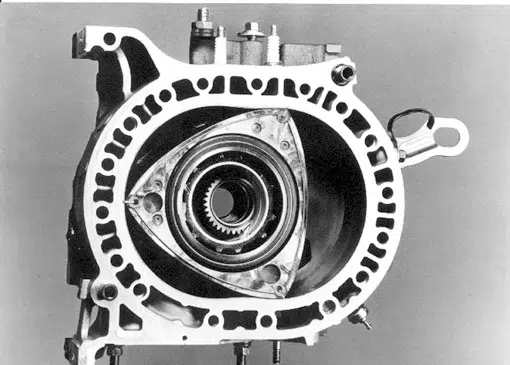
In America, rumours are rife that the model has already received production approval for 2024 at both companies and Toyota's president of race car development, David Wilson, didn't... hold back and told the American edition of Car & Driver that the GR GT3 Concept could be the Lexus GT3. Other reports, however, insist that Toyota will opt for a revival of one of its legendary models, the Toyota 2000GT.
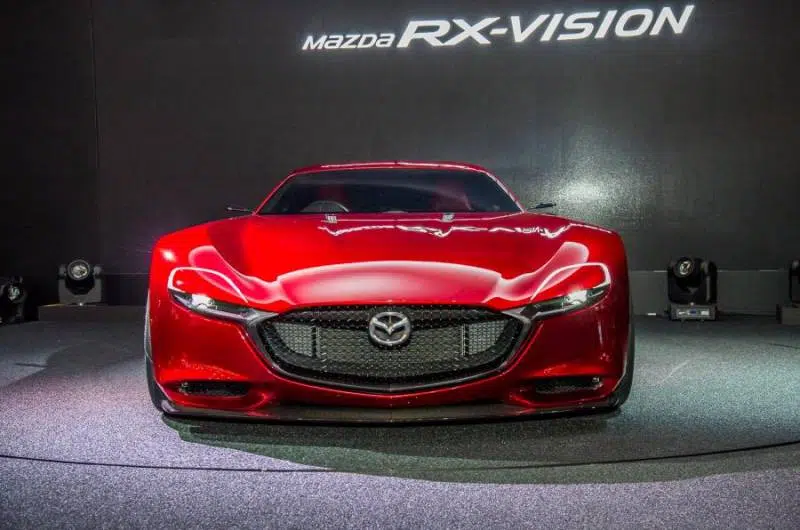
Okay Toyota. What about Mazda? Hiroshima, based on the same information, will have its own version, in which it will use an electric motor and a rotary engine (which would justify the name "RX"). It has, after all, patented a hybrid 3-rotor set for the first time since the 20B of the 90s or the 2007 Furai concept.
In the patents we see that the three-rotor turbocharged engine, for reasons of economy, could also use hydrogen as fuel, something that is being studied in cooperation with Mazda, Toyota, Subaru, Yamaha and Kawasaki.
The hints
During the launch of the RX-Vision, Mazda told us that "RX-Vision represents a vision of the future that Mazda hopes to one day make a reality: A front-wheel-drive, rear-wheel-drive sports car with refined, designer-language KODO-based proportions that only Mazda could envision, powered by the next-generation SKYACTIV-R rotor."
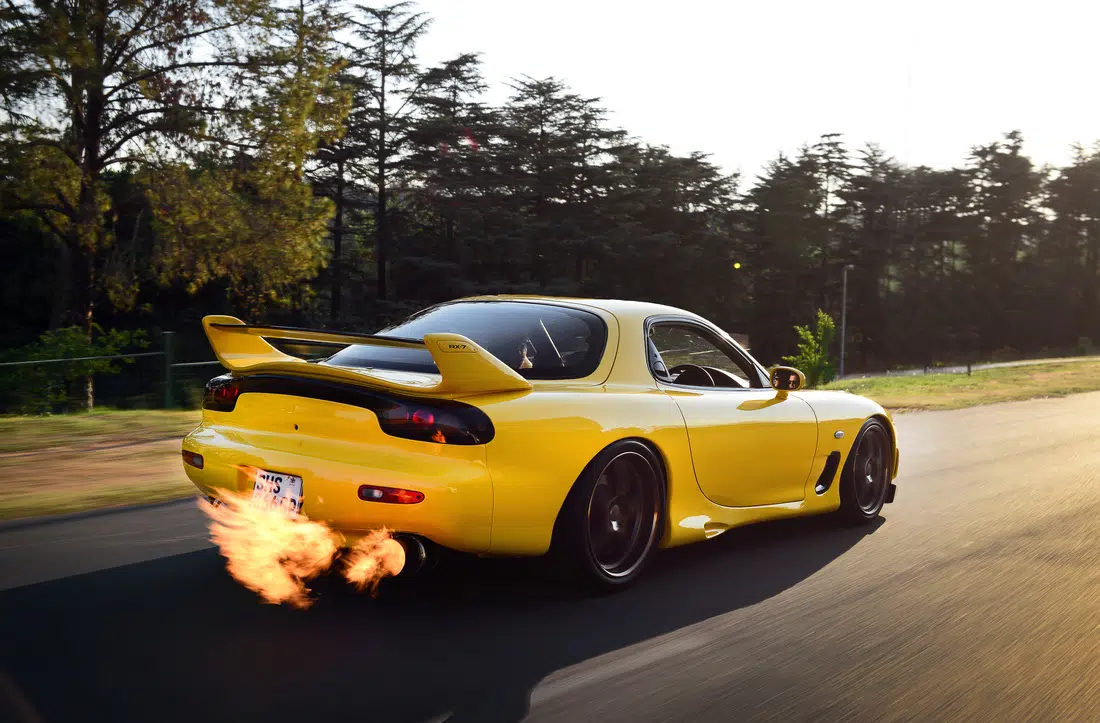
Mazda also meaningfully tells us that "mass production is currently on hold (confirming TopSpeed.gr which, unlike others, stressed that Wankel has not been abandoned by the Japanese), Mazda has never stopped research and development efforts on the rotor. The next rotor has been named SKYACTIVE-R, expressing the company's determination to take on challenges with ambitions that defy conditions and the latest technology."

In addition to the SkyActive R patented by Mazda, the brand registered the RX-9 and RX-7 names with the Japanese Trademark Office. Unconfirmed reports wanted Mazda to introduce the new model in 2017, the 50th birthday of the rotary engine, or in 2018, the 40th birthday of the RX-7. 2023, then, is the RX-7's 45th birthday.
The patents
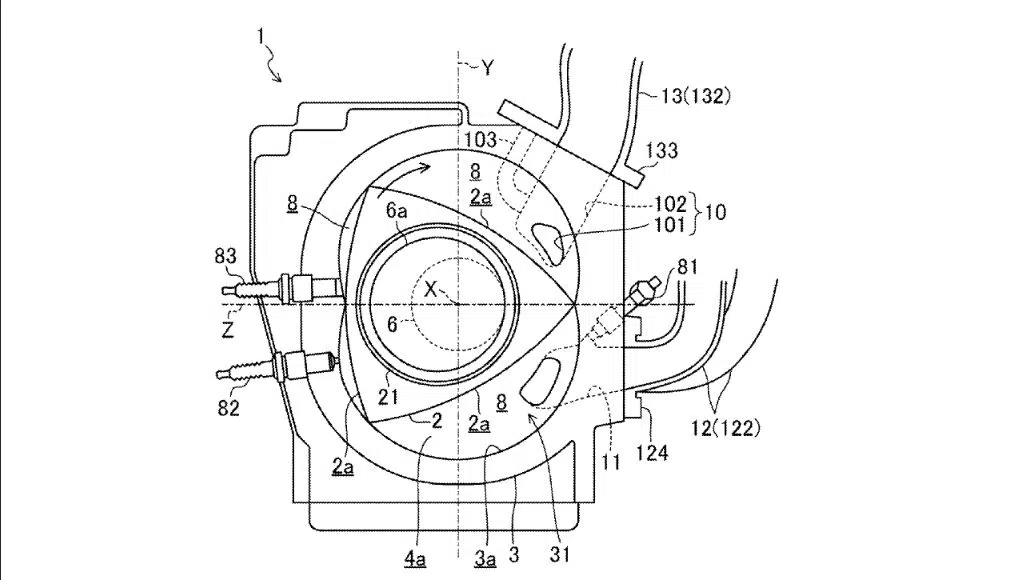
Over the past few years, Mazda has patented a number of designs involving three-door, three-row coupes. Standing out as a key one is application number (U.S. patent) 2016/0084158, filed on March 24, 2016, for the RX Vision Concept; and what do we learn about the former 16X and current SkyActiv-R? First, that it has 23% more displacement than the Renesis and that it has a 400 horsepower capacity. The change in internal geometry (and sizes, of course), and the extensive use of aluminum where the 13B used iron, in addition to improving weight, solves the problem of lack of torque at low rpm.
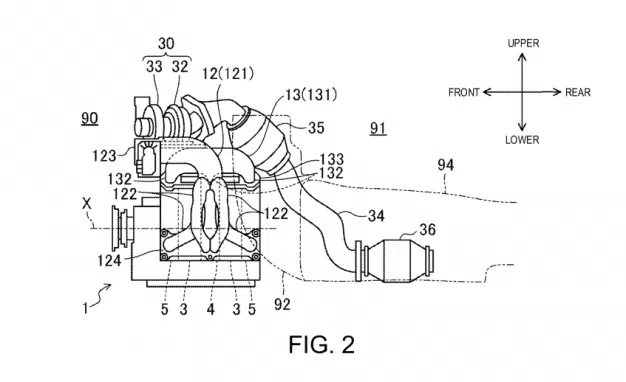
The patent application is... hopelessly full of technical details. This time, Mazda, has turned the engine about 180 degrees relative to its longitudinal axis, gaining (more) space under the hood with all that this might entail for weight distribution, and the turbocharger is mounted high. In fact, so much grace is left for a beastly turbocharger up high that don't be surprised to see... a bulge on the hood of the production RX.
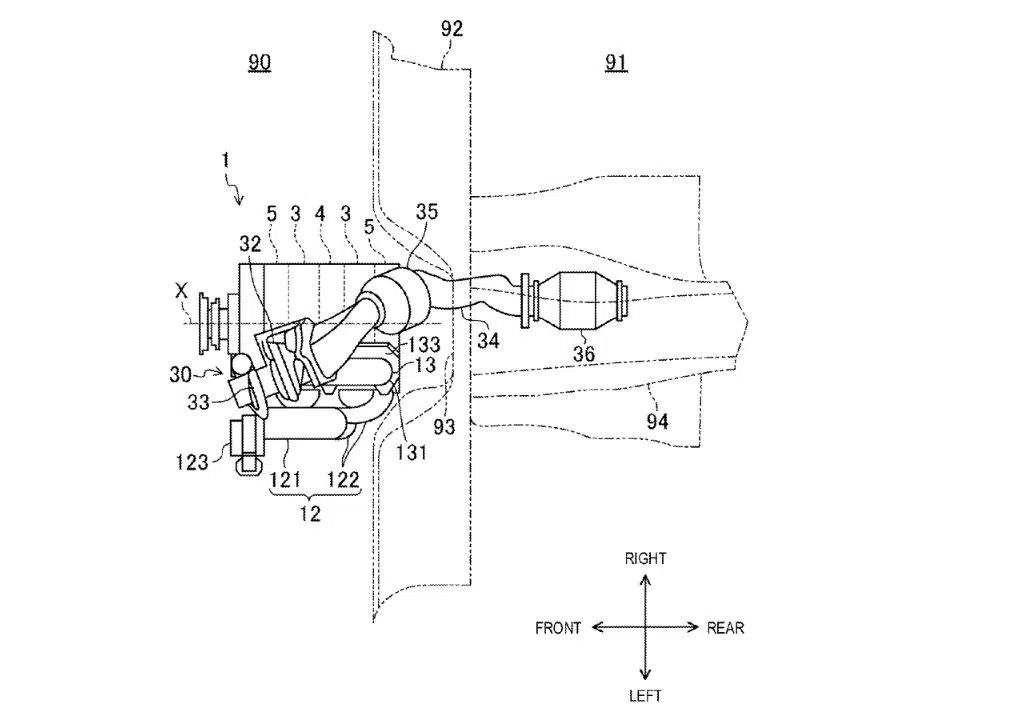
The rotor is as we know it, but the injectors are now closer (as close as you can get) to the combustion chamber, which shows us that Mazda has found a first solution to what we've been told is the "unsolvable problem", consumption. Not only that, but also torque from low revs, before the turbo kick arrives.
As far as emissions are concerned, Mazda's application states that due to the engine's position, it can be placed very low and the space left under the bonnet can be used to place a catalytic converter close to the engine, "improving performance in terms of tailpipe emissions". In fact, we can see that it leaves room on the right and left for the suspension.


